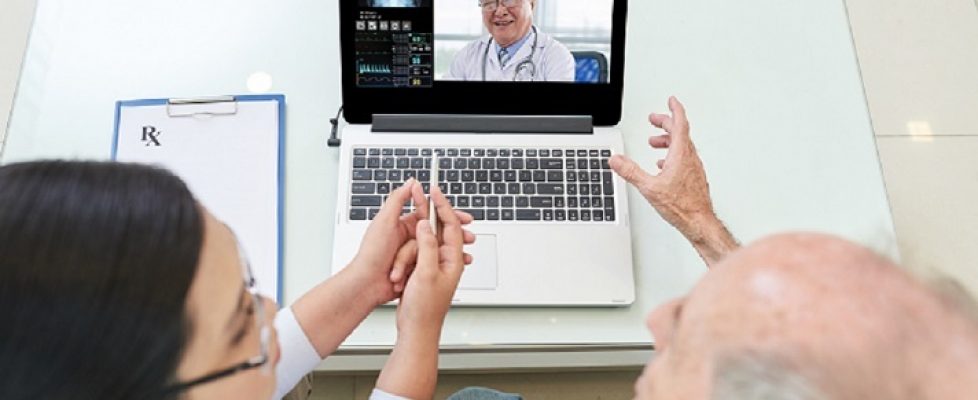FAQs: Medical Resident Use of Telehealth During COVID-19
During the COVID-19 public health emergency (PHE), the Centers for Medicare & Medicaid Services (CMS) has authorized new flexibility for medical residents and teaching physicians to rely on telehealth when caring for Medicare beneficiaries. For many types of services, it is no longer necessary for the patient, resident and supervising physician to all be in the same location during the clinical encounter.
How can teaching physicians use telehealth to supervise medical residents during the COVID‑19 PHE?
In general, a teaching physician may bill Medicare for services furnished by a resident only if the physician is physically present for the “key portion” of the service. During the PHE, however, teaching physicians may supervise most services via real-time audio/video technology in lieu of physical presence. (Note: In-person supervision is still required for certain higher-risk services, as described below.) Telehealth services and supervision may be provided from home, as well as from a healthcare setting.
Under this flexibility, permissible configurations include the following scenarios:
- The resident provides in-person services, either in the patient’s home or at the hospital. The teaching physician supervises from home.
- The patient receives telehealth services at home. The resident participates from her own home and the teaching physician participates from the hospital.
- The resident, located at home, performs services that do not involve patient interaction, such as reading test results or interpreting imaging studies. The teaching physician supervises via telehealth from home.
Which services still require in-person supervision by the teaching physician?
The emergency telehealth flexibilities do not apply to the following services:
- Surgical, high-risk, interventional or other complex procedures
- Services performed through an endoscope
- Anesthesia services
For these services, the teaching physician must be physically present for the key portion of the service/procedure or for the entire procedure, as applicable under the normal rules for medical residents.
How has CMS expanded the primary care exception during the COVID‑19 PHE?
Under the so-called primary care exception, a resident may provide certain low- and mid-level evaluation and management (E/M) services in primary care centers without in-person supervision during the clinical encounter, subject to certain conditions. Notably, the teaching physician must be “immediately available” to the residents as needed, and must review the services furnished either during or after the encounter.
CMS made three changes to the primary care exception for purposes of the COVID‑19 PHE:
- First, the teaching physician may satisfy the “immediate availability” and review requirements using telehealth. The other conditions of the primary exception continue to apply (e.g., the physician must not supervise more than four residents at a time and remains responsible for the care of all beneficiaries seen by each resident).
- Second, the primary care exception now covers additional services, including:
– All levels of office/outpatient E/M services (note: the E/M level selection can be based on medical decision making (MDM) or time, with time defined as all of the time associated with the E/M on the day of the encounter)
– Telephone E/M services, CPT codes 99441 to 99443
– Transitional care management, CPT codes 99495 and 99496
– Online digital E/M services, CPT codes 99421 to 99423
– Interprofessional telephone/internet/electronic health record referral service, CPT code 99452
– Brief communication technology-based service, HCPCS code G2012
– Remote evaluation of recorded video/image submitted by an established patient, HCPCS code G2010 - Third, when services under the primary care exception are furnished via telehealth, there is no need to document a history and/or physical exam in the medical record, which is normally required.
How should hospitals claim IME and DGME for resident services provided via telehealth or in patients’ homes?
The rules on Indirect Medical Education (IME) and Direct Graduate Medical Education (DGME) do not contemplate medical residents providing telehealth services from home or providing in-person services to patients in their own homes. During the PHE, a hospital may claim a resident for IME and DGME purposes as long as (1) the hospital pays the resident’s salary and fringe benefits for the time the resident spends on these activities, consistent with existing rules; (2) the resident performs patient care duties within the scope of the approved residency program; and (3) the services meet appropriate physician supervision requirements, as described above.

